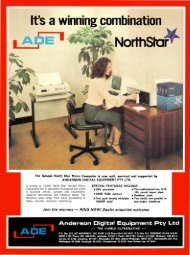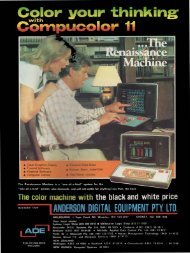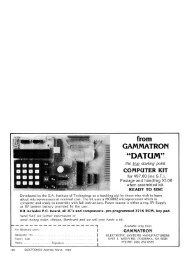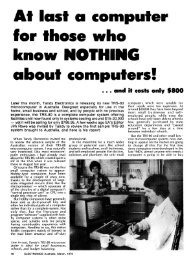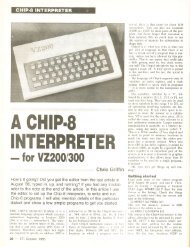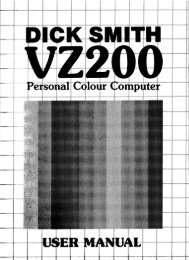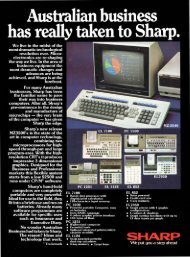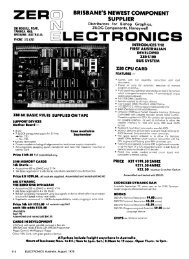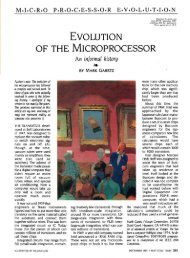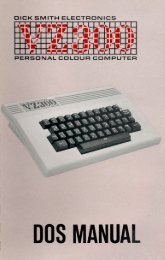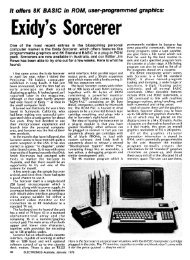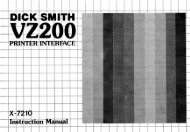Scope Component Test Unit
Scope Component Test Unit
Scope Component Test Unit
Create successful ePaper yourself
Turn your PDF publications into a flip-book with our unique Google optimized e-Paper software.
connection in turn. The segments should light and thewaveform shown in Fig. 14(b) should be displayed — anFND500 was used to get this trace.Resistor WaveformsThe displays obtained when resistors of various valuesare connected across T and E are shown in Fig. 15. Thistest won't replace your ohmmeter, but is useful whenmaking in-circuit checks.In-circuit <strong>Test</strong>sA helpful feature of the tester is its use for in-circuittests. Many transistors, diodes, capacitors, etc. can betested whilst still in circuit — disconnect the equipmentfrom the mains supply of course! Also make sure thatreservoir/smoothing capacitors and the c.r.t.'s final anodeare discharged.In some cases the waveforms will be affected by othercomponents in the circuit, i.e. those shunting the componentbeing checked. In practice you'll soon get used tothis. If you service particular TV sets or VCRs regularly,it's helpful to note various key waveforms you shouldobtain. If there's room, these can be drawn on or aroundthe circuit diagram.If it's necessary to isolate a transistor, unsolder only twoof its leads and keep them clear of the print. Check thetransistor, then resolder the two leads if it tests good. Thissaves time and also avoids the problems of finding theboard unmarked after removing a transistor completely —and perhaps putting it back the wrong way round . . .The same principle applies with diodes, capacitors etc. -with only one lead being unsoldered of course.Continuity <strong>Test</strong>ingContinuity checks on print and transformer windingsetc. can also be made. Doubtless you'll find many additionaluses for your component tester.TELEVISION JUNE 1984 429



